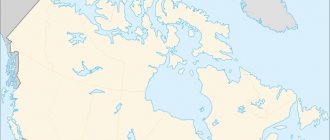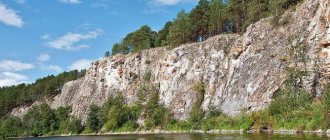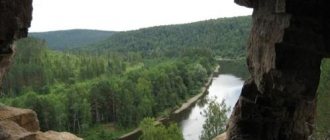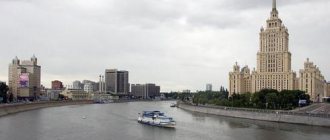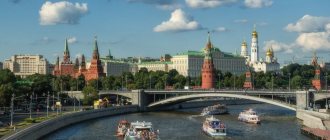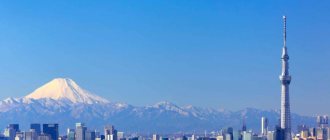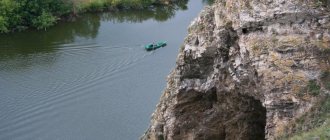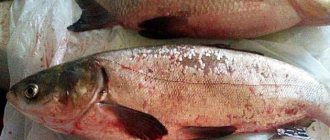Japan is an island country located in eastern Asia. The country is known for its highly developed infrastructure and modern technology, as well as its rich culture. However, tourists who are lucky enough to visit it are content mainly with visiting the capital - Tokyo, and excursion cities - Kyoto, Hiroshima. Because of this, one gets the erroneous impression that all of Japan is nothing more than a modern metropolis, although the country has very picturesque nature. In particular, it is worth paying attention to the rivers of Japan.
General information about rivers
Due to the geographical location of Japan, the rivers here cannot boast of large sizes. There are about 260 reservoirs in the country. Basically, they originate on mountain slopes, carve V-shaped valleys and, descending to the foothills, create alluvial plains. Residents of the country use rivers to cultivate rice fields or create residential settlements near such places.
In general, the length of Japan's rivers does not exceed 20 kilometers; the basin area is on average 130 square kilometers. However, real giants for this area are located on the territory of the country.
Features of fishing in Japan
The most fertile time for Japanese fishermen is autumn. Both freshwater, anadromous and semi-anadromous fish bite well, and in the estuaries there are also sea fish.
It would seem that the rivers of Japan are a paradise for anglers. But it is not so. In densely populated industrial areas (the plains of Kanto and Quiney), you can often see hundreds of anglerfish wading in some “catching” place, widely advertised in the press and on television. However, most of them have very modest catches - just a few small fish. The reason for this is significant river pollution.
Some of them, like Macaws, which were very fishy in the past, have become lifeless. There are no fish in the Samida River, which flows through Tokyo, or in the Yoda River, on which Osaka stands. Osaka and Tokyo bays are also heavily polluted. Therefore, fishermen in large industrial cities (Tokyo, Osaka, Yokohama, etc.) prefer to fish in reservoirs and ponds. In them, along with ordinary carp and crucian carp, white and black carp, artificially bred in these reservoirs, are caught. Some Tokyo fishermen fish without leaving the capital - in salons where they catch carp from the pool for a fee.
In Japan, people are accustomed to fishing, one might say, from the cradle. The baby doesn’t even know how to walk, but he’s already playing with fish and crustaceans. Then the toys are replaced by live fish, which the child observes through the glass of the aquarium. A young Japanese very early begins to become acquainted with the life of fish, learn to understand their behavior, and penetrate the mysterious life of the underwater world. Perhaps this is the main reason that the Japanese are first-class fishermen, and searching fishermen who strive to improve their fishing. And sometimes they achieve phenomenal results in this field.
Sea fishing in Japan
Sea fishing in Japan is one of the most exciting forms of active recreation. As a result of this, fishermen from all over our planet often come to Japan for fishing. And as mentioned earlier, one of the most popular fishing spots in Japan is Tokyo Bay. If you want to catch tuna as a trophy, then you need to hire a specially equipped boat for catching this fish. The captains of such ships know very well the places where you can get the desired trophy.
Fishing with cormorants in Japan
Fishing in Japan with cormorants In Japan, there is one ancient way of fishing, which today Japanese fishermen entertain tourists with.
This is Japan's national cormorant fishing sport. Such fishing is carried out only at night under the light of lanterns or torches, which attract fish from the bottom. In the vastness of the Nagara River, today fishermen often use this method of fishing. In Japanese, fishing with cormorants is called "ukai". The habitat of cormorants is huge. They are distributed almost all over the world. In China and Japan, cormorants have been used for fishing since ancient times.
In ancient times, almost the entire territory of Japan was covered with lush forests, and the entire territory of the islands was surrounded by a coastline that stretched for hundreds of kilometers. These places have always been an excellent home for river and sea cormorants.
With the onset of winter, sea cormorants migrate to the southern and central parts of Japan, with the exception of the islands of Honshu and Hokkaido, and stay there until the onset of spring warmth. As for river cormorants, they constantly live on islands in many parts of the country.
Evidence of the close ancient connection between people and cormorants is that the Japanese even have a separate hieroglyph for “cormorant”; the names of many places and even the surnames of people are also associated with this bird.
Episodes of fishing in Japan with the help of cormorants were depicted on pottery; even in the 5th-6th centuries, ancient Chinese documents also mention this method of fishing. It is also known that this method of fishing was used in 150 different places in Japan. Most likely, this type of fishing came to Japan from China long before the 5th century, just like many other crafts that came from the Middle Kingdom to the Land of the Rising Sun.
Nowadays, fishing in Japan with cormorants is used in two dozen different places in the country, but this fishery flourishes solely for the sake of attracting tourists. The most popular places where you can watch or participate in cormorant fishing are the Nagara River in the city of Gifu. The fishing season in these places lasts from the first half of May to mid-October for 158 days.
Cormorants, which are used for fishing in the Nagara River, are a marine species. They are brought at the age of 2 years to the city of Gifu from the Ibaraki coast. There they are caught and trained. Sea cormorants are considered more capable fishers than the river species. Usually the cormorant dives and underwater grabs a fish with its beak, having surfaced, the bird throws the prey so that it falls into the beak head first and swallows it. This bird has a hook-shaped beak that opens at an angle of up to 80 degrees; it is capable of swallowing fish up to 40 cm in length. A special hemp bandage is placed around the cormorant’s neck to prevent fish from getting into the bird’s stomach. When a fisherman notices a swelling on the neck of a cormorant, he squeezes the bird’s throat with his hands so that it gives up its prey.
But the bandage that clings to the cormorant is in a fairly loose state and small fish are able to fly into the cormorant’s stomach, so the bird will not remain hungry. If the bandage is tightened, the cormorant will, of course, catch more fish, but this way it will get tired faster and its lifespan will be shortened. Cormorants hunt all year round, and their lifespan rarely exceeds 5 years. But in places where fishing with cormorants is practiced, these birds can live up to 15 and even 20 years. Fishing cormorants are well cared for, and they are always given the opportunity to have a good rest.
Fishing in Japan with cormorants begins after dark. On the boat, the fisherman lights a torch and its light attracts fish and at the same time illuminates the way. The team leader uses thin leashes to hold the bird in a place illuminated by a torch. The person who holds the cormorants with leashes is called u-sho; high-level professionals can hold up to 12 cormorants. The spectacle of catching fish with cormorants is very exciting. The art of wu-sho evokes real admiration among many people, because manipulating a whole flock of diving birds that return back with fish is very spectacular.
Of course, it is very interesting to look at this spectacle, but sea fishing in Japan for various types of fish is no less interesting and most fishermen come to this country to fish in the sea.
Top 5 largest rivers in Japan
The top five greatest rivers in the country are:
- The Shinano River is the main and longest river. Its length is 368 kilometers. The river is located on the island of Honshu, near the city of Niigata, and flows into the Sea of Japan. Due to its size, Shinano is an important waterway for the island.
- The Tone River is also located on the island. Honshu. Its length is 322 kilometers. The river originates at the top of Mount Ominakami. It plays a big role in the development of the tourism industry: it is suitable for water sports, and one of the most famous hot spring resorts is located on its shores.
- The Ishikari River is 268 kilometers long and is considered the main source of fresh water on the island of Hokkaido. It begins near the foot of Ishikariyama and flows into the China Sea. The river bed is winding.
- The Kitakami River has perhaps the largest basin in the Tohoku region. Located on the island of Honshu, the length is 249 kilometers. During Edo times it was used to transport rice that was grown in its valley.
- The Abukuma River is the second longest in the Tohoku region - 239 kilometers. Its source is located on Mount Asahi. Abukuma flows into the Pacific Ocean.
List of first class river systems[ | ]
First class river systems (Japanese) Russian.
(Japanese: 一級水系
Ikkyū: suikei
) - in accordance with the classification according to the Japanese “law of rivers” (Japanese: 河川法
Kasen ho
:), rivers and waterways that are considered important for the economy of the country as a whole, as well as for nature conservation within Japan. There are currently 109 first class river systems.
| № | River | Total length, km |
| Honshu | ||
| 1 | Shinano (river) | 367 |
| 2 | Tone (river) | 322 |
| 3 | Kitakami (river) | 249 |
| 4 | Abukuma | 239 |
| 5 | Kiso (river) | 227 |
| 6 | Oyabe (river) | 227 |
| 7 | Mogami (river) | 216 |
| 8 | Tenryu (river) | 213 |
| 9 | Agano (river) | 210 |
| 10 | Go (river) | 194 |
| 11 | Arakawa (river) | 173 |
| 12 | Oi (river) | 168 |
| 13 | Nagara (river) | 166 |
| 14 | Khi (river) | 153 |
| 15 | Naka (river, Tochigi Ibaraki) | 150 |
| 16 | Mabeti (river) | 142 |
| 17 | Asahi (river) | 142 |
| 18 | Tama (river) | 138 |
| 19 | Sendai (river) | 137 |
| 20 | Yoneshiro (river) | 136 |
| 21 | Key (river) | 136 |
| 22 | Omono | 133 |
| 23 | Yoshii (river) | 133 |
| 24 | Fuji (river) | 128 |
| 25 | Kuji (river) | 124 |
| 26 | Niyodo (river) | 124 |
| 27 | Jinzu | 120 |
| 28 | Yahagi (river) | 117 |
| 29 | Kuzuryu (river) | 116 |
| 30 | Sho (river) | 115 |
| 31 | Takahashi (river) | 111 |
| 32 | Sagami (river) | 109 |
| 33 | Ono (river) | 107 |
| 34 | Hiji (river) | 103 |
| 35 | Ota (river) | 102,9 |
| 36 | Iwaki (river) | 102 |
| 37 | Kako (river) | 96 |
| 38 | Shonai (river) | 96 |
| 39 | Miya (river) | 91 |
| 40 | Naruse (river) | 89 |
| 41 | Ashida (river) | 86 |
| 42 | Kurobe (river) | 85 |
| 43 | Kushida (river) | 85 |
| 44 | Naka (river) | 83,7 |
| 45 | Takatsu (river) | 81 |
| 46 | Hino (river) | 77 |
| 47 | Toyo (river) | 77 |
| 48 | Iodo | 75 |
| 49 | Todori (river) | 74 |
| 50 | Ara (river) | 73 |
| 51 | Tedori (river) | 72 |
| 52 | Kikuchi (river) | 71 |
| 53 | Ibo (river) | 70 |
| 54 | Aka (river) | 70 |
| 55 | Maruya (river) | 68 |
| 56 | Yamato (river) | 68 |
| 57 | Oirase (river) | 67 |
| 58 | Seki (river) | 64 |
| 59 | Takase (river) | 63,7 |
| 60 | Koyoshi (river) | 63 |
| 61 | Yabe (river) | 61 |
| 62 | Hime (river) | 60 |
| 63 | Edo (river) | 59,5 |
| 64 | Saba (river) | 57 |
| 65 | Joganji (river) | 56 |
| 66 | Natori (river) | 55 |
| 67 | Adze (river) | 55 |
| 68 | Kumozu (river) | 55 |
| 69 | Abe (river) | 53,3 |
| 70 | Sakai (river) | 52,1 |
| 71 | Sendai (river) | 52 |
| 72 | Casio (river) | 50 |
| 73 | Kano (river) | 46 |
| 74 | Rumoi (river) | 44 |
| 75 | Tsurumi (river) | 42,5 |
| 76 | Kakehashi (river) | 42 |
| 77 | Suzuka (river) | 40 |
| 78 | Banjo (river) | 38 |
| 79 | Kimotsuki (river) | 34 |
| 80 | Tenjin (river) | 32 |
| 81 | Kamo (tributary of Yodo) | 31 |
| 82 | Kita (river, Shiga) | 30 |
| 83 | Honmyo (river) | 28 |
| 84 | Kiku (river) | 28 |
| 85 | Shakudjii (river) | 25,2 |
| 86 | Kanda (tributary of the Sumida) | 24,6 |
| 87 | Sumida (river) | 23,5 |
| 88 | Ooka (river) | 14 |
| 89 | Misawa (river) | |
| Hokkaido | ||
| 1 | Ishikari (river) | 268 |
| 2 | Tesio (river) | 256 |
| 3 | Tokati (river) | 156 |
| 4 | Kushiro (river) | 154 |
| 5 | Yura (river) | 146 |
| 6 | Yabari (river) | 136 |
| 7 | Mu (river) | 135 |
| 8 | Siribetsu (river) | 126 |
| 9 | Tokoro (river) | 120 |
| 10 | Abashiri (river) | 115 |
| 11 | Chitose (river) | 108 |
| 12 | Saru (river) | 104 |
| 13 | Akan (river) | 98 |
| 14 | Yubetsu (river) | 87 |
| 15 | Shokotsu | 84 |
| 16 | Nakkappu (river) | 80 |
| 17 | Siribeshi-Toshibetsu (river) | 80 |
| 18 | Shibetsu (river) | 78 |
| 19 | Toyohira (river) | 72,5 |
| 20 | Shizunai (river) | 69,9 |
| 21 | Rumoi (river) | 44 |
| 22 | Koetoi (river) | 41,9 |
| 23 | Mitsuishi (river) | 31,6 |
| 24 | Makomanai (river) | 21 |
| 25 | Anano (river) | 9,4 |
| Kyushu | ||
| 1 | Kuma-Gawa | 115 |
| 2 | Oyodo (river) | 107 |
| 3 | Gokase (river) | 103 |
| 4 | Syrah (river) | 74 |
| 5 | Omaru (river) | 73 |
| 6 | Onga (river) | 61 |
| 7 | Kase (river) | 57 |
| 8 | Yamakuni (river) | 56 |
| 9 | Oita (river) | 55 |
| 10 | Rokkaku (river) | 47 |
| 11 | Matsura (river) | 46 |
| Shikoku | ||
| 1 | Simanto | 196 |
| 2 | Yoshino (river) | 194 |
| 3 | Naka (river, Takushima) | 125 |
| 4 | Monobe (river) | 71 |
| 5 | Shigenobu (river) | 36 |
| 6 | Docks (river) | 33 |
The fastest
Along with large and flooding rivers, three fastest bodies of water can be distinguished:
- The Mogami flows through Yamagata Prefecture. The length is 216 kilometers, and the water flow is 250 m3 per second. The mouth of the river is the Sea of Japan.
- The source of the Fuji River is located on Mount Nokogiri, it ends at Suruga Bay, flowing into the Pacific Ocean. Its length is 128 kilometers. Current speed is 64 m3 per second.
- Kuma is located on the island of Kyushu. Its length is more than 115 kilometers. Current speed is 104 m3 per second. It flows into Yatsushiro Bay. It is considered the most popular place among tourists: in 1 year, about 70 thousand people visited its territory.
Interesting to know
The rivers of Japan are very different from those that can be found on the continents: briskly descending the mountain slopes, they dissolve in the depths of the ocean. The largest rivers are used to transport timber, and river flows, which flow powerfully due to the difference in elevation, are an excellent way to generate additional electricity.
In addition to the fastest and largest rivers, the country has the most amazing bodies of water:
- The length of Kubore is only 85 kilometers, but the speed of the flow allows it to generate electricity - 10 power plants have been built along the river. In addition, the water here is of the highest quality in the country.
- Ateragawa has an amazing emerald color. Its length is only 15 kilometers, but the water is so clean and transparent that you can see every pebble at the bottom.
- The Kakita is one of the few rivers in Japan that arose from spring water. Its length is a little more than a kilometer. All year round, the water temperature is 15 degrees, which is why you can see many flocks of birds on the banks of the reservoir.
- Oirase is known as the Road of 27 Waterfalls. It is under guard.
River banks are considered the best place to relax in Japan. Of course, during the industrial boom, some reservoirs were damaged by waste from industrial enterprises, but today the government carefully monitors the preservation of nature.
Lakes of Japan
Japan is rich in lakes, there are more than 3000 of them. In terms of origin, reservoirs can be divided into three groups:
- The first arose due to volcanic activity. A striking example is the largest lake in Japan - Biwa.
- The second group is lakes in the craters of extinct volcanoes. They are also called mountain ones. These are lakes such as Asi, Suwa and Shinano.
- The third group is lagoons, which were formed due to the movement of the coastline when the remaining water filled depressions in the soil. These lakes are close to the sea, such as Hitati and Simosa.
Lakes of Honshu Island
The list of lakes in Japan is endless. This is a real country of lakes. There is no such number of them in any European state. The largest bodies of water on the island of Honshu are:
- Biwa.
A trip to Japan is impossible without visiting Lake Biwa. This is the largest and oldest body of water. It is about 4 million years old. The water is fresh, many different species of fish live here, and 1,100 species of animals and birds live on the shore. The lake is often mentioned in chronicles and legends. - Fuji Five Lakes area.
Tourists love to visit this place. Lava flows blocked the rivers, and thus lakes appeared. They are connected to each other by underground rivers. Their surface level is 900 m above sea level.
The Fujiko Railway Line is nearby and connects you to Fuji-Yoshida or Fuji-Kawaguchiko to enter the region. The five lakes themselves are as follows:
- Lake Yamanaka
located near the village of Yamanakako. Many houses and resorts await tourists on the coast. Any water activities are provided. You can go around the lake by bicycle along equipped paths; transport can be rented for $25 per day. Children will love riding on the amphibious bus. The cost of the trip is $15 for adults and $10 for children; - Kawaguchi
is a large and accessible lake that can be easily reached from Tokyo. There are always a lot of tourists here and a wide range of entertainment is offered. This includes a beach holiday, swimming in hot springs, riding swan boats and yachts. Nearby are the towns of Fuji-Yoshida and Fuji-Kawaguchiko; - Sai
is located near Kawaguchi, but it is not so popular among tourists. The view of Mount Fuji is obscured by other mountains. There are campsites and several viewing platforms around the lake. You can go surfing and water skiing, there is excellent fishing here; - Shoji
the smallest and most beautiful lake of all five. From here you have a beautiful view of Mount Fuji. An observation platform has been specially installed so that you can admire the surrounding nature; - Motosu
is the westernmost and deepest lake here. It is distinguished by the purest warm water; in winter it does not freeze. An image of a lake with Mount Fuji was printed on the 5,000 yen note, and has now moved to the back of the 1,000 yen note. The location where the photo was taken is marked, and many people there take photos with the 1000 yen note. From mid to late May, the Fuji Shibazakura festival is held here.
- Asi.
In the central part of the island of Honshu there is Lake Ashi - another attraction of Japan. Fishing is very good here as there are a lot of fish in the water. There are many boats and boats running between the cities of Togendai and Hakone-machi. This is one of the crater lakes in Japan, from which a tunnel was cut into the rocks in 1671. Thanks to him you can get to the village of Fukara. Ashi is located near Mount Fuji, which is reflected in the waters of the lake; in good weather, a fabulous view opens up. - Kasumigaura.
The second largest lake in Japan, two large and 30 small rivers flow into it, and the Tone River flows out. The reservoir is used for fishing, tourism, and irrigation. - Towada.
This lake is of volcanic origin. It appeared as a result of a strong eruption. Fills a double crater. Towada is the second deepest lake in Japan and is becoming increasingly popular. An excellent holiday destination for those looking for peace and quiet. Local restaurants are famous for their fish dishes, especially grayling. - Tazawa.
Located in the north of the island. After the volcanic eruption, a crater was formed, which was filled from underground sources. This is the deepest lake in Japan. The depth reaches 425 m. The water is so clear that a thrown coin can be seen at a depth of 30 m. - Suva.
Located in central Honshu. A wonderful place to relax. There are hot geysers here that emit fountains every hour. You can take healing baths. - Inawashiro.
Located in the center of Fukushima Prefecture. The lake has the cleanest water in Japan. Flocks of swans come here to spend the winter. - Occam.
This lake of regular round shape is called the lake of “five colors”. The color of the water in it changes several times during the day. This is a photographer's paradise.

